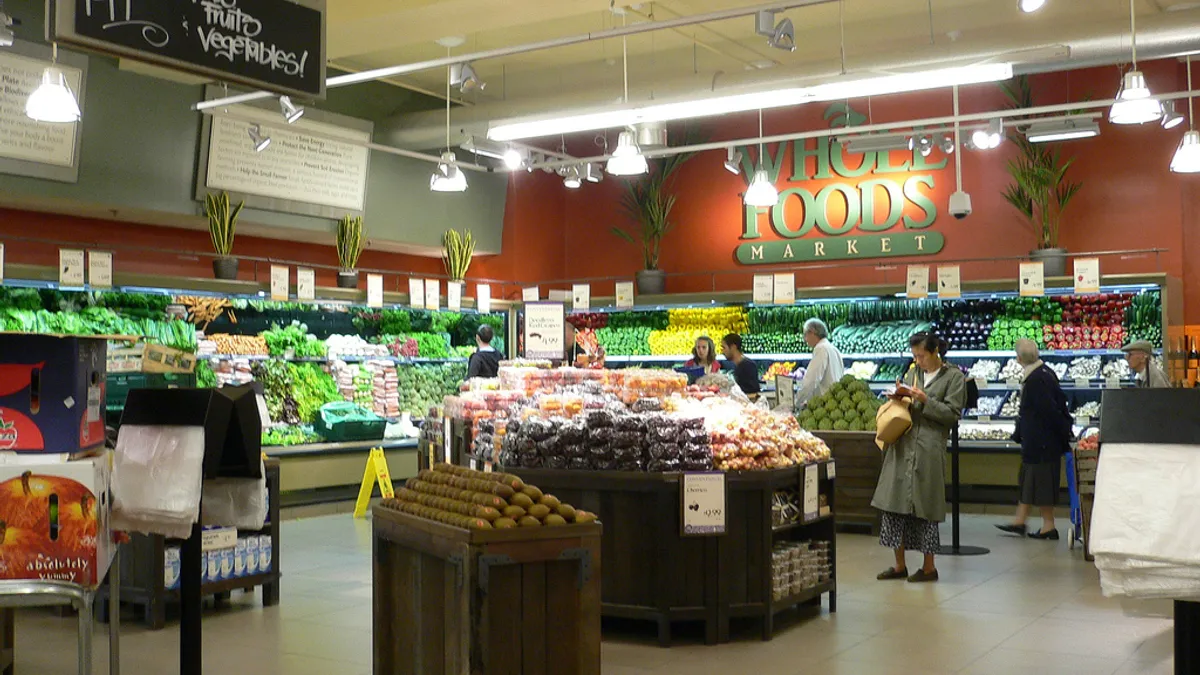Dive Brief:
- Whole Foods shoppers told Business Insider that the quality of the grocer’s produce has deteriorated significantly under Amazon’s ownership. Customers who spoke with the news outlet said they’ve purchased rotten, tasteless fruits and vegetables, and have noticed more out-of-stocks this fall.
- “I purchased apples that tasted like water, an orange that was yellow and tough on the inside, and a bruised lemon,” one New York City customer told BI. The news outlet interviewed half a dozen Whole Foods shoppers, and noted widespread discontent on social media. Analysts with Barclays also found one of the company’s stores to be in “disarray” during a recent visit, with boxes cluttering aisles and "significant restocking taking place at 10 a.m.," BI reported.
- Whole Foods, in response, says nothing has changed operationally or with its produce quality standards that would account for a decline in quality.
Dive Insight:
After riding a wave of positive publicity following its pre-holiday price cuts, Whole Foods may be in danger of losing some of the good vibes it gained with shoppers.
The problem with this latest groundswell of discontent is twofold. First, it concerns one of Whole Foods’ core categories, and one that defines the company’s image. It’s also being linked to the grocer’s new owner, Amazon, during a sensitive transition time when the companies are working to integrate their brands.
Amazon wants shoppers to see both it and Whole Foods as sharing a commitment to quality products, low prices and innovation. News like this, however, threatens to drive a wedge between quality-focused Whole Foods and efficiency-at-all-costs Amazon.
Every grocer has to deal with shopper complaints about product quality, and in an age when many air these grievances over social media, companies have developed strategies to address these concerns and to monitor broader trends. Whole Foods will most likely work to improve its image online. It should also take a close look at its operations to see what could be causing this uptick in produce-related complaints.
It’s impossible to say what, if anything, is at the root of the problem. What can be said with certainty, though, is that Amazon is streamlining Whole Foods’ buying operations. To many customers and industry observers, this represents a troubling “mainstreaming” of a company known for high-quality, hard-to-find niche and local products. Sources have told news outlets — Food Dive among them — that Whole Foods has cut ties with many small brands. Barclays analysts, who regularly visit Whole Foods locations and report on their observations, have reported that stores are emphasizing conventional products in their merchandising.
Time will tell if consumer sentiment toward the grocer continues to sour, or if Amazon can successfully bring a premium halo back to its stores — especially the produce aisle.










